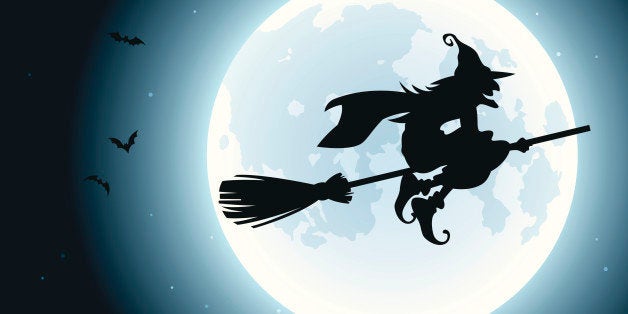
In 1485, Pope Innocent VIII published his treatise on the prosecution of witches, Malleus Maleficarum. This addressed concerns that extreme weather events were brought about by witches consorting with the Devil to wreak havoc on the populace. Unprecedented extreme weather conditions across much of western Europe were common in the decades before 1485 and for some 300 years after, a period known as the Little Ice Age. Severe hardships were imposed on those who relied on agriculture, which is to say, most of the population.
Poor harvests led to food shortages, malnutrition, disease and death. In the absence of any other explanation for why such weather extremes happened, suspicion fell on those who were thought to commune with evil spirits and bring about disaster. Pope Innocent's recommendation was that that those responsible be tried and executed. Over the next two centuries thousands of innocent women were brutally executed in a futile attempt to restore equilibrium to the climate.
Today, we understand that these severe weather conditions were natural occurrences, often related to changes in climate brought about by explosive volcanic eruptions, compounded by small reductions in energy from the sun. These were unusual events, but they imposed crippling burdens on society in many regions, often aggravating underlying socio-economic problems, leading to despair and anger, and the search for scapegoats. People did not have the benefit of scientific understanding, or an ability to forecast how their climate would evolve in the future, so perhaps it is not surprising that they resorted to extreme measures. But we have no such excuse -- we have a sophisticated understanding of the climate system and what causes it to change. This leads us to a stark conclusion: as carbon dioxide levels continue to increase in the atmosphere, we can expect more frequent and more intense weather extremes -- more storms, more floods, more heatwaves.
Along our coasts, flooding will increase as sea-level relentlessly rises. Impacts will be felt around the world as rainfall patterns shift, changing the climate we have come to expect, with severe impacts on agriculture, water resources, ecosystems and transportation. Disruptions to the agricultural sector will affect everyone, pushing prices to record levels. While we in the United States have the capacity to cope with such market disruptions, less developed parts of the world do not, and there, the impacts will be more direct and the consequences will be felt more sharply. Meanwhile, in Washington, Congress has been completely impotent in stemming the driver of increasing climate extremes -- emissions of carbon dioxide.
Even worse, many in Congress have vowed that actions by the Executive branch to limit emissions from power plants will never be implemented. Without such measures, the U.S. will have no credibility in international negotiations to reduce global emissions. This will drive us inexorably towards a world of increasing weather extremes, with immense ecological and societal costs, and uncertain geopolitical implications. Who will those who suffer the most, blame for such effects? This time, it won't be the witches.